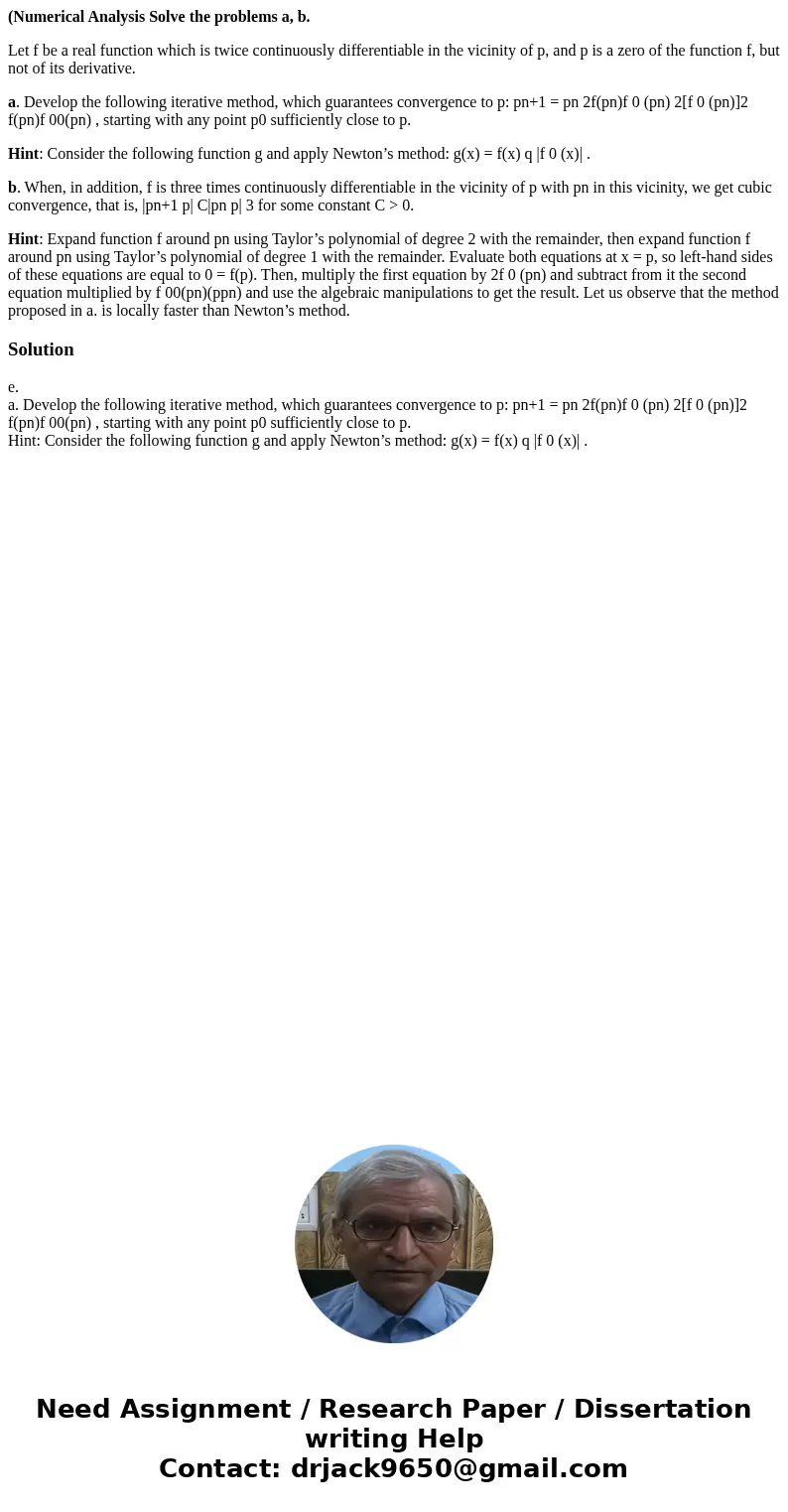Numerical Analysis Solve the problems a b Let f be a real fu
(Numerical Analysis Solve the problems a, b.
Let f be a real function which is twice continuously differentiable in the vicinity of p, and p is a zero of the function f, but not of its derivative.
a. Develop the following iterative method, which guarantees convergence to p: pn+1 = pn 2f(pn)f 0 (pn) 2[f 0 (pn)]2 f(pn)f 00(pn) , starting with any point p0 sufficiently close to p.
Hint: Consider the following function g and apply Newton’s method: g(x) = f(x) q |f 0 (x)| .
b. When, in addition, f is three times continuously differentiable in the vicinity of p with pn in this vicinity, we get cubic convergence, that is, |pn+1 p| C|pn p| 3 for some constant C > 0.
Hint: Expand function f around pn using Taylor’s polynomial of degree 2 with the remainder, then expand function f around pn using Taylor’s polynomial of degree 1 with the remainder. Evaluate both equations at x = p, so left-hand sides of these equations are equal to 0 = f(p). Then, multiply the first equation by 2f 0 (pn) and subtract from it the second equation multiplied by f 00(pn)(ppn) and use the algebraic manipulations to get the result. Let us observe that the method proposed in a. is locally faster than Newton’s method.
Solution
e.
a. Develop the following iterative method, which guarantees convergence to p: pn+1 = pn 2f(pn)f 0 (pn) 2[f 0 (pn)]2 f(pn)f 00(pn) , starting with any point p0 sufficiently close to p.
Hint: Consider the following function g and apply Newton’s method: g(x) = f(x) q |f 0 (x)| .

 Homework Sourse
Homework Sourse